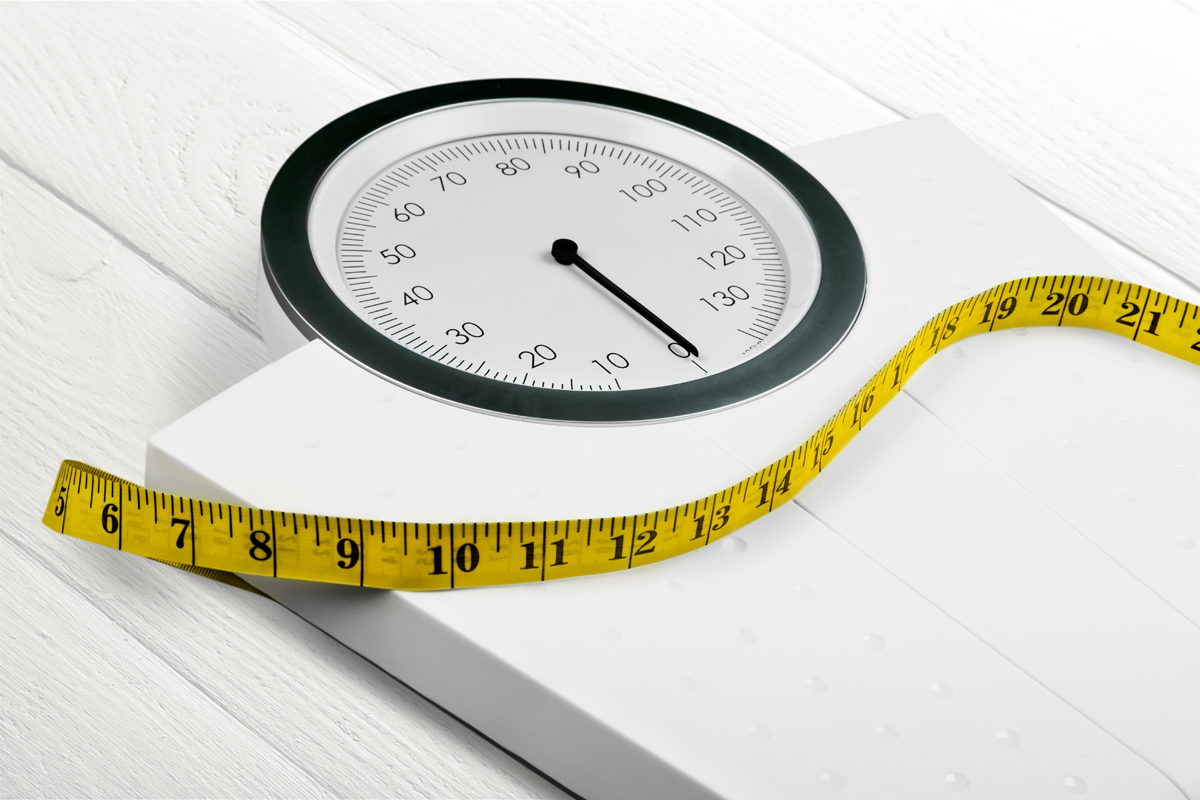Weight Control
Losing weight is mostly just a lifestyle change away.

THE DIAGNOSTICS
1. Do you typically gain weight over the holidays?
2. Are you diabetic?
3. Do you have high blood pressure, cholesterol or triglycerides levels?
4. Do you have osteoarthritis?
5. Do you simply want to start eating healthier?
THE RX
IF YOU’VE ANSWERED YES …
From the end of November straight through to Jan. 1, eating becomes the No. 1 pastime of most Americans and, unfortunately, it’s not just broccoli and carrots we’re putting in our bellies!
While we’re gaining an average of only a pound or two each year, the problem is we’re not losing those pounds, and then when Thanksgiving rolls around again, we’re adding another couple … and so on and so on. January becomes a month of guilt, fad diets and trips to the gyms that are quickly discarded.
It doesn’t have to be that way.
WEIGHT AND HEALTH RISKS
There are many equations to determine “ideal” weight, but one person’s ideal is not necessarily another’s. “There are so many other factors involved, such as genetics, where the weight is, what the health risk factors are,” says Jan Starkey, RD, CDE, nutrition clinic director for VCU Medical Center.
Age is also a big factor. In a recent Australian study, people over 65 with a body mass index (BMI) of 27.5, (which falls midway in the “overweight” category, according to the World Health Organization), actually had the lowest risk of death, lower than peers in the “normal” range of 18.5 to 24.99. Anywhere between 23 and 33 is considered acceptable for those 65 and older. So while weight equations are good general guidelines, it’s best to consult a physician or dietitian to find the number that works for you.
As you’re accumulating pounds, you’re also racking up health risks. Carrying around too much weight is not only hard on your joints; it can also increase your risk for diabetes, heart disease, stroke, certain cancers and other health problems.
But the good news is that even a small change can yield big results. “Losing just 5 to 10 percent of your original weight can make a big health difference in the long term,” says Starkey. That includes easing osteoarthritis pain and lowering blood pressure, cholesterol and triglyceride level, as well as helping reverse insulin resistance that can lead to Type 2 diabetes.
CHANGING YOUR WAYS
“You don’t just develop heart disease or diabetes overnight. It’s a process that takes place,” Starkey explains. “We can either keep feeding that process by eating a poor diet high in fats, trans fats, sugars and calories, or we can start to improve it by eating a more plant-based, Mediterranean-style diet and using portion control.”
You may not have heard of the Mediterranean diet, but most of it is pretty commonsense: plenty of fruits and vegetables, whole grains, legumes, fish and poultry. But you’re also allowed healthier fats like olive oil (use it on bread, as a butter substitute, like the Italians and Greeks), some types of nuts and even red wine in moderation.
To get your portions right, Starkey points to the government ChooseMyPlate program, which recommends filling half your plate with fruits and vegetables, one quarter with proteins and one quarter with grains (try to keep them whole). Visit choosemyplate.gov for specific portion sizes.
Making changes like these – and, of course, working in a regular exercise program – will have you losing weight slowly, steadily and safely. That’s in contrast to diets promoting rapid weight loss, which can cause you to lose even more muscle mass than you would in the normal aging process. And says Starkey, “Once you’ve lost muscle mass [which is critical for mobility and stability], it’s very tough getting it back, especially the older we get.”
To give your muscles an advantage, get plenty of protein (20-30 grams in each meal) along with regular exercise.
CASE STUDY: MARCIA SMITH
“I’d always promised myself when I was young and slender that I was going to stay that way … But sometimes Mother Nature doesn’t help you out,” says 66-year-old Marcia Smith, who had put on 20 pounds by her 61st birthday.
When her daughter heard that there was a personal trainer at her parent’s subdivision, Summer Lake, she gave her mom a gift certificate to get her back in the gym. Smith started attending exercise classes with trainer John Pappas, who also counseled her on her diet, including eating five small meals a day, instead of three large ones, and increasing fresh foods, versus processed, on her grocery list.
“The first year is slow; the weight doesn’t drop immediately like some people would hope,” Smith notes. “It’s a very consistent loss, which is a safer loss.” After five years, she’s surpassed her initial goal of 20 pounds by 10 and is down to a trim 128. That represents a 19 percent weight loss. She’s also reduced her dosage of blood pressure medicine.
During the holidays, Smith has learned to pick healthier options on party spreads and “just take a taste” of sweets. Most importantly, Smith chooses socializing over grazing.
Starkey, the dietitian, says that’s exactly right. “The holidays are to be celebrated, and food is only part of that celebration!”

